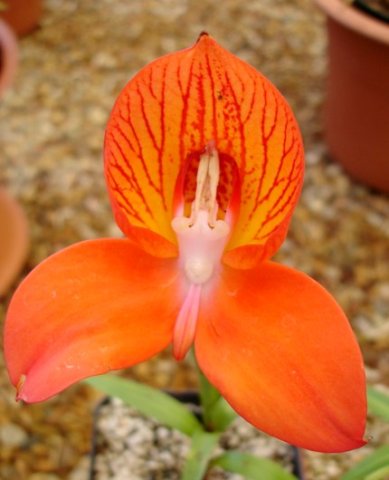Disa uniflora of another colour

Author: Ivan Lätti
Photographer: Judd Kirkel Welwitch
One of the more orange flowering forms of Disa uniflora is shown in the photo. The flower displays the well-known triangular shape, its striking appearance dominated by the three sepals.
The median sepal above has the characteristic, forking red lines and dots where the veins run, not visible on the pair of lateral sepals. It is this line pattern resembling a fishnet that inspired the Swedish botanist, Bergius to name the genus for Disa, the legendary queen of the ancient Swedes that dressed herself in a net to meet her prospective husband, the king.
The puny lip of the flower between the lower margins of the lateral sepals is often the outstanding floral feature in disas (and other orchids), but not in D. uniflora. The lip starts in bud at the top of the flower, before the twist of the ovary brings it down below. Its prime spot in the flower positions it well for showing off, but it doesn’t.
The remaining petal pair beside the lip, making up the six segments of the flower corolla or perianth, are the lateral petals. In D. uniflora (and some other disas) the lateral petals are easily missed, due to their small size.
In this picture they are “hidden” in full view, right in the centre of the median sepal. The median sepal is only helmet-shaped or sunken in its very central area around the lateral petals and the column. The lateral petals are red in this flower, narrow and curving in at their tips over the top of the anther positioned between them (Liltved and Johnson, 2012).

